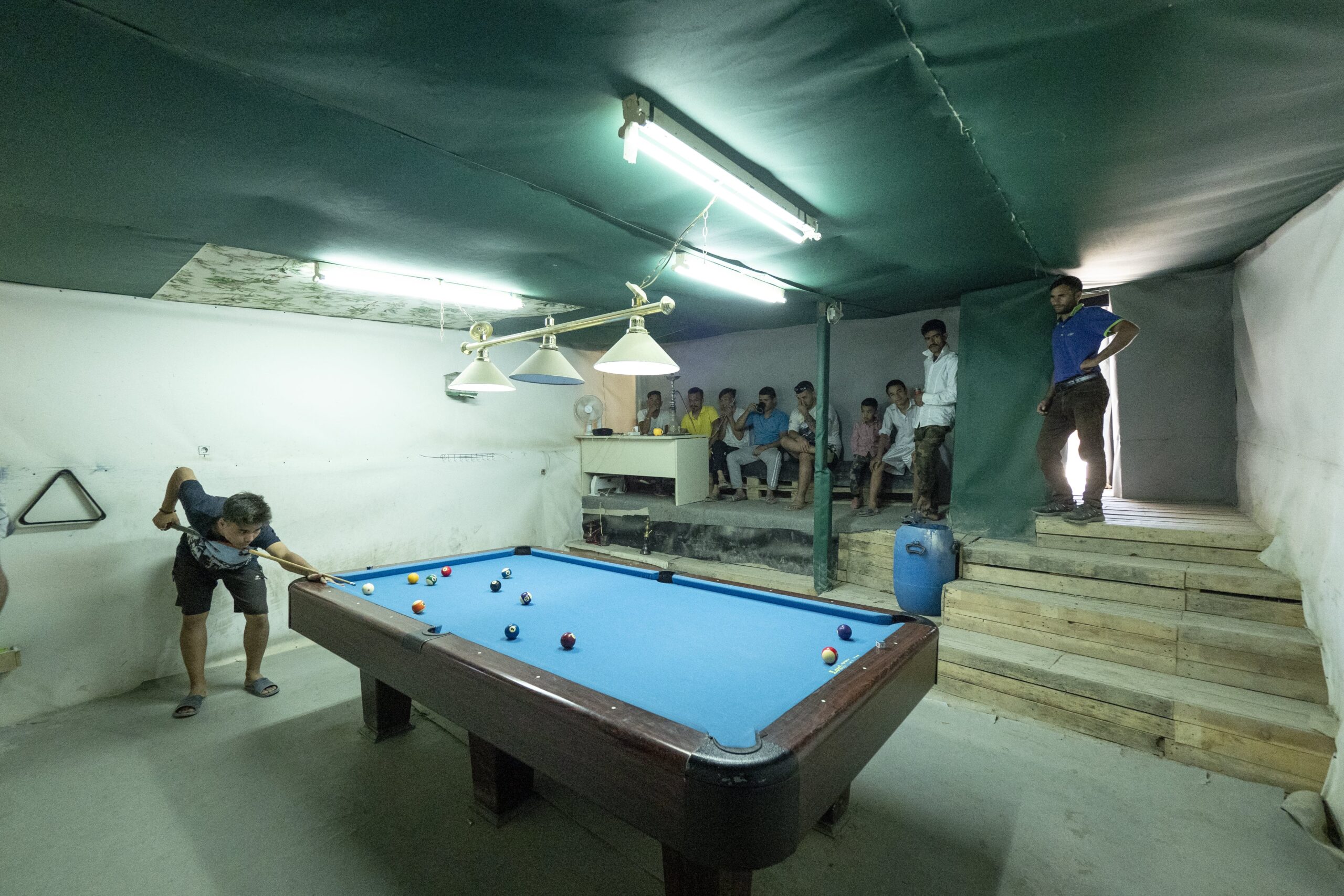Greengrocer’s, barbershops, pool halls: Inside the marketplace of the Ritsona
A photo report by Thodoris Nikolaou for Solomon

A photo report by Thodoris Nikolaou for Solomon
Solomon visited Ritsona, the largest refugee facility on the mainland, and documented life in the camp and the informal market that has developed over the years, meeting the economic and social needs of thousands of camp residents since 2016.
Greengrocer’s, barbershops, minimarkets, repair shops and bicycle shops − which supply the approximately 1,000 children who live in the camp, and make transportation to nearby towns easier for the adults; Pool halls, cafes, and nightclubs are only some of the shops in the marketplace which create an internal economy of the camp, with connections to both the local area’s shops and to Athens.
As they told us, although the money that shop owners and employees earn may not always be satisfactory, the market manages to meet another, sometimes more pressing, need of camp life: providing some kind of daily activity. Waiting and inactivity are the biggest challenges that residents have to deal with for the time they’re living at the facility − which can often be more than a year.
The pandemic, and the often disproportionately strict measures on the refugees, in comparison to the measures imposed on the general population, significantly affected the camp community, which was already isolated from the wider community, with the nearest town of Halkida, 10 kilometers away from the camp.
Since the beginning of this summer, a three-meter-high concrete wall has been erected around the perimeter of the facility. The wall is the first, and most symbolic, element of the impending installation of an integrated surveillance system, as planned by the Ministry of Migration and Asylum, and funded by the European Union.
In a short time, security cameras and thermal imaging cameras, drones, gates and X-ray machines will be gradually installed in all state accommodation facilities on the mainland and on the Greek islands.
Residents of the camp and humanitarian organizations are concerned that the new conditions will only deepen the isolation of the Ritsona camp community from the local community, and will affect life within the facility.












Before you go, can you chip in?

Quality journalism is not of no cost. If you think what we do is important, please consider donating and becoming a reader who makes our work possible.